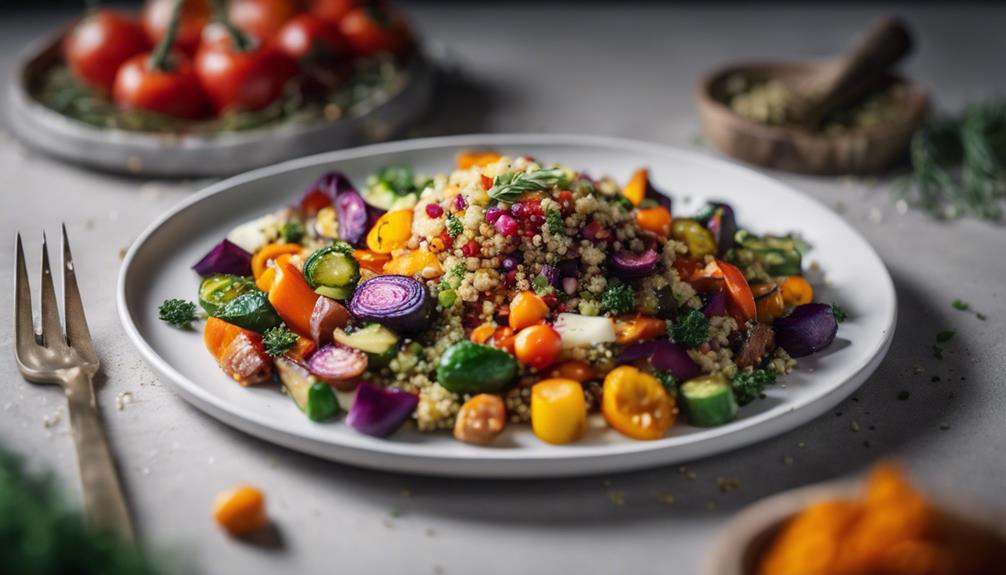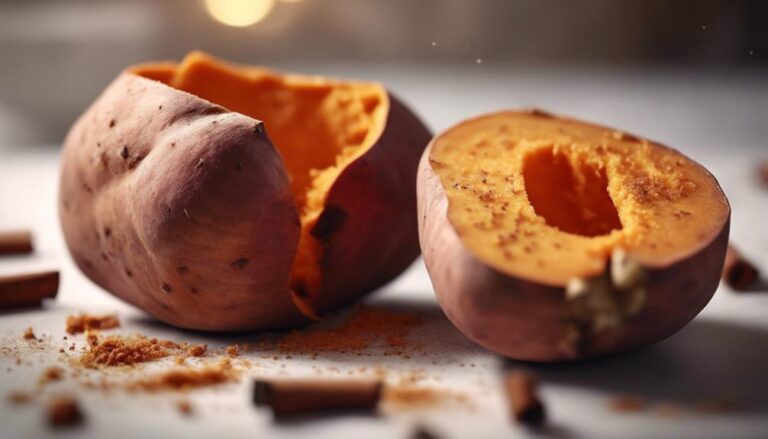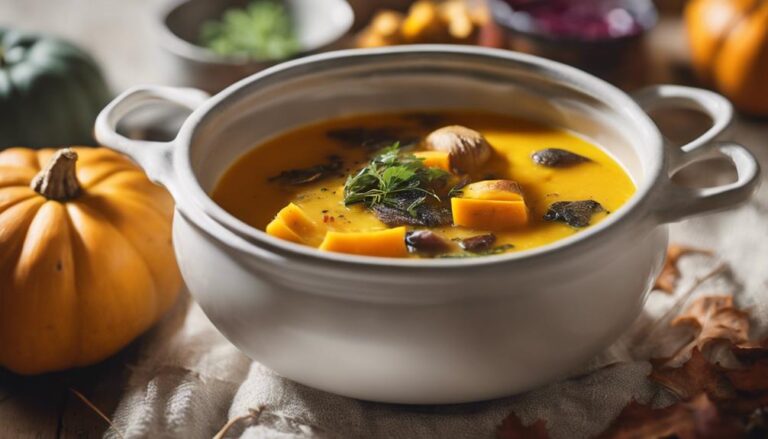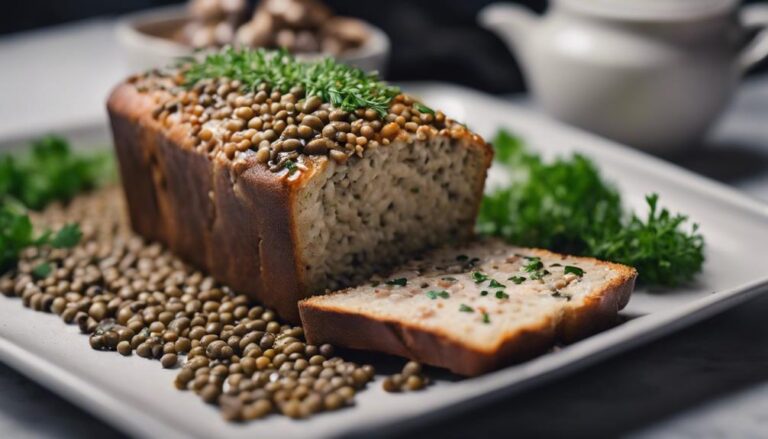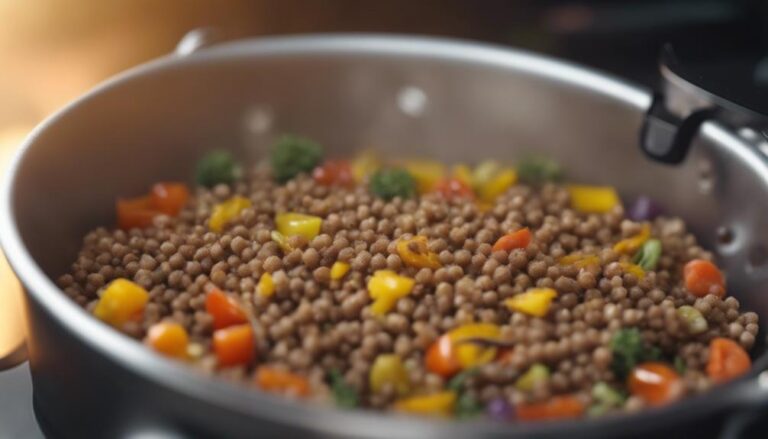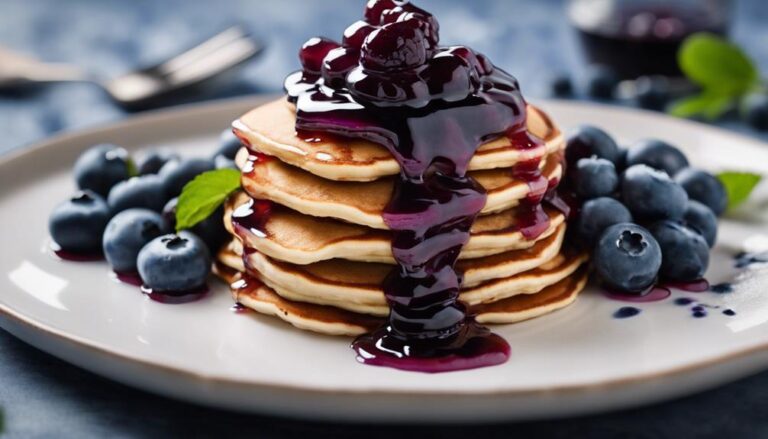Sous Vide Quinoa Salad With Roasted Vegetables
Sous vide cooking guarantees perfectly cooked quinoa and tender roasted vegetables, safeguarding nutrients and enhancing flavors in a nutritious and delicious salad. Enjoy a harmonious blend of textures and tastes in this vibrant and healthy dish. Quinoa, rich in protein and fiber, complements the roasted vegetables, packed with essential nutrients. The precision cooking techniques elevate your dining experience by locking in flavors and preserving ingredient integrity. Discover the benefits of this precise method for a convenient and flavorful meal. Uncover more insights into the culinary world of quinoa, roasted vegetables, and sous vide perfection.
What You Will Learn Here
- Sous vide quinoa ensures fluffy texture and optimal cooking.
- Roasting vegetables beforehand enhances flavors and nutrients.
- Precision cooking preserves ingredient integrity and enhances flavors.
- Sous vide quinoa salad with roasted vegetables offers a nutritious and convenient meal.
- Combination provides a harmonious blend of textures and tastes for a delicious dining experience.
Quinoa's Ancient Origins
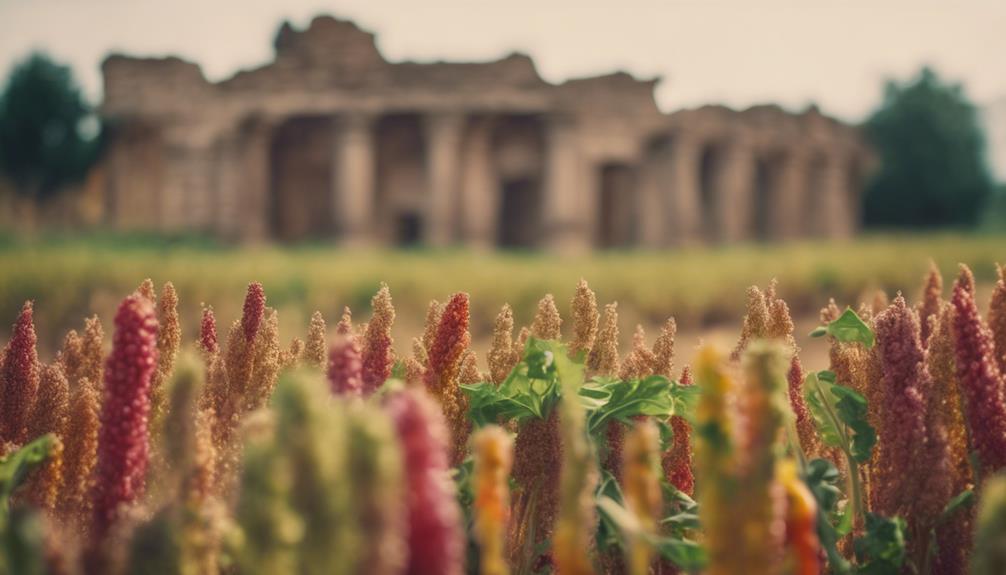
Quinoa, an ancient crop originating in the Andean region, holds significant historical importance as a staple food for indigenous peoples like the Inca. Its cultivation for thousands of years reflects the nutritional benefits it offers, being rich in protein, fiber, and various essential nutrients.
Additionally, quinoa's culinary versatility allows for a wide range of dishes that cater to different dietary needs and preferences.
Quinoas Historical Significance
With origins dating back over 3,000 years in the Andean region of South America, quinoa holds a significant historical importance as a sacred crop revered by indigenous peoples. Cultivated by civilizations such as the Inca Empire, quinoa was dubbed the 'mother of all grains' and played a pivotal role in their diets. The United Nations recognized quinoa's cultural significance by declaring 2013 the 'International Year of Quinoa.' Resilient to harsh growing conditions, this superfood became a staple for high-altitude communities, contributing to its historical importance. Below is a table summarizing quinoa's historical significance:
| Cultural Significance | Nutritional Value |
|---|---|
| Sacred crop | High in protein |
| Staple food | Rich in fiber |
| Indigenous reverence | Packed with vitamins |
Quinoas Nutritional Benefits
Originating in the Andean region of South America, quinoa's nutritional benefits stem from its ancient history as a protein-rich seed revered for its exceptional nutrient content.
Quinoa isn't only protein-rich but also a complete protein source, containing all nine essential amino acids important for human health.
Being gluten-free, quinoa is a suitable alternative for individuals with gluten sensitivities or celiac disease.
This ancient grain is a powerhouse of essential nutrients like fiber, iron, magnesium, and antioxidants, elevating its status to that of a superfood.
With its remarkable combination of nutrients, quinoa can be a valuable addition to your diet, especially when paired with delicious roasted vegetables for a nourishing and satisfying meal.
Quinoas Culinary Versatility
The ancient origins of quinoa trace back to its cultivation for thousands of years in the Andes region of South America, where it earned the title of the 'Mother of All Grains' for its exceptional nutritional content and culinary adaptability.
Quinoa's versatility makes it a valuable ingredient in various dishes, including salads like the Sous Vide Quinoa Salad With Roasted Vegetables. As a gluten-free and nutritious option, quinoa serves as an excellent source of plant-based protein for vegetarians. Its ability to absorb flavors and textures makes it ideal for pairing with roasted vegetables, enhancing the dish's taste and nutritional profile.
Whether used in savory or sweet recipes, quinoa's rich history and adaptability continue to make it a popular choice for those seeking a wholesome and satisfying meal.
Quinoa's Nutritional Benefits
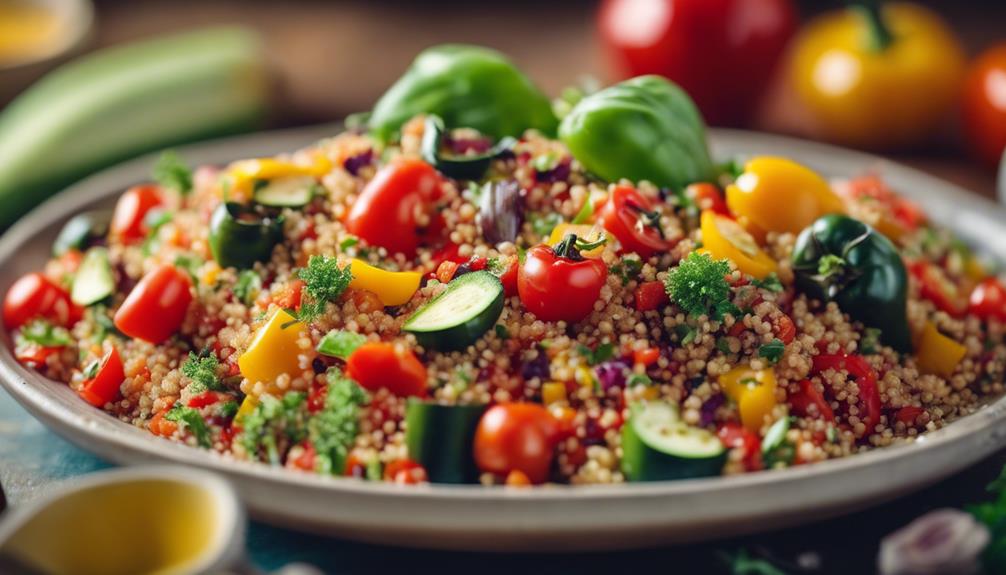
Quinoa stands out as a nutritional powerhouse due to its status as a complete protein source, providing all nine essential amino acids important for bodily functions.
Incorporating quinoa into your diet brings a range of health benefits:
- Rich in Fiber: Quinoa is high in fiber, aiding digestion and promoting satiety, helping you feel full for longer periods.
- Packed with Vitamins and Minerals: This superfood contains essential vitamins like B vitamins and vitamin E, along with minerals such as magnesium, iron, and zinc essential for overall well-being.
- Gluten-Free: Being gluten-free, quinoa is a great alternative for individuals with gluten sensitivities or celiac disease, offering a versatile option for various dietary needs.
- Antioxidant Powerhouse: Quinoa's antioxidant content helps combat inflammation and oxidative stress in the body, supporting overall health and well-being.
Quinoa Salad Variations
Explore the delightful array of Quinoa salad variations like Quinoa and Roasted Veggie Harmony, Vegan Quinoa Buddha Bowl, and Quinoa and Chickpea Power Bowl. These variations offer a mix of textures, flavors, and nutrients to suit your preferences and dietary needs.
Enhance your salads by adding fruits, nuts, cheeses, herbs, spices, or citrus elements for a vibrant and satisfying meal experience.
Quinoa and Roasted Veggie Harmony
For a nutrient-rich and flavorful quinoa salad variation, consider harmonizing sous vide quinoa with a medley of roasted vegetables. When combining these elements, you create a dish that not only tastes delicious but also provides essential nutrients for your body. Here are some reasons why this combination is a great choice:
- Enhanced Flavor: Roasting vegetables brings out their natural sweetness and adds a depth of flavor to the quinoa.
- Textural Contrast: The softness of sous vide quinoa complements the crispy texture of roasted vegetables, creating a satisfying mouthfeel.
- Nutrient Retention: Sous vide cooking preserves the nutrients in both quinoa and vegetables, ensuring you get the most out of your meal.
- Balanced Nutrition: The combination of quinoa and roasted vegetables offers a balanced mix of carbohydrates, proteins, vitamins, and minerals for a wholesome dish.
Vegan Quinoa Buddha Bowl
Consider incorporating a diverse array of roasted vegetables to elevate the nutritional profile and flavor complexity of your Vegan Quinoa Buddha Bowl. The combination of quinoa and roasted vegetables in this plant-based Buddha Bowl provides a rich source of nutrients and flavors.
To make your bowl even more delicious and nutritious, try these customizable options:
- Roast a mix of colorful bell peppers, zucchini, and cherry tomatoes for a vibrant dish.
- Add protein-packed chickpeas or tofu for an extra boost.
- Drizzle a tangy lemon tahini dressing over the bowl for a delightful flavor.
- Top with a sprinkle of fresh herbs like parsley or cilantro to enhance the overall taste experience.
Enjoy the goodness of this wholesome and customizable Vegan Quinoa Buddha Bowl!
Quinoa and Chickpea Power Bowl
Incorporate a variety of colorful vegetables and legumes into your Quinoa and Chickpea Power Bowl to enhance its nutritional content and flavor complexity.
- Roasted Vegetables: Add roasted bell peppers, zucchini, and cherry tomatoes for a burst of flavor and antioxidants.
- Quinoa: A gluten-free grain rich in protein and fiber, aiding in digestion and keeping you full.
- Chickpeas: Packed with plant-based protein, chickpeas offer a substantial texture and essential nutrients like iron and folate.
- Nutrient Powerhouse: This bowl provides a mix of vitamins, minerals, and antioxidants, supporting overall health and well-being.
Roasting Vegetables Perfectly
To roast vegetables perfectly, it's important to understand various techniques such as slicing uniformly for consistent cooking and caramelization.
Ideal roasting temperatures usually range between 400-450°F to achieve that perfect balance of tenderness and crispiness.
Following suggested roasting times based on the vegetable type and size guarantees they're cooked through while preserving their nutrients and flavors intact.
Vegetable Roasting Techniques
Enhance the flavors and nutritional value of your vegetables by mastering the art of roasting them perfectly.
Roasting vegetables, such as those in a quinoa side dish, is a great way to bring out their natural sweetness and depth of flavors through caramelization. Simple seasoning with salt and pepper can elevate the vegetables' taste without overshadowing their inherent goodness.
This cooking technique not only enhances taste but also helps retain essential nutrients that might be lost in other cooking methods like boiling.
Additionally, roasted vegetables can be prepared in advance, making meal planning more convenient and offering versatility in incorporating them into various recipes. Perfecting the roasting process can notably impact the overall quality of your meals and the satisfaction of those you serve.
Optimal Roasting Temperatures
Wondering what temperatures guarantee perfect caramelization and texture when roasting vegetables? To achieve ideal texture and flavor development, it's recommended to roast vegetables at temperatures between 400°F to 425°F. This range allows for caramelization while maintaining tenderness.
Higher temperatures can expedite cooking but may risk burning or uneven roasting. On the other hand, lower temperatures around 350°F can result in softer vegetables with less browning. Different vegetables may require varying roasting times and temperatures for the best results, so monitoring them throughout the process is essential.
Roasting Time Recommendations
When aiming for perfectly roasted vegetables, achieving the ideal texture and flavor development relies greatly on determining the appropriate roasting times for different varieties.
Roasting vegetables at 400°F for 20-30 minutes allows for caramelization and tenderness to enhance their natural flavors. Dense vegetables such as sweet potatoes may require longer roasting periods compared to softer veggies like bell peppers.
It's crucial to check the vegetables periodically to guarantee they reach the desired level of doneness without burning or undercooking. Remember, roasting times can be adjusted based on personal preferences for texture and flavor intensity.
Experimenting with different roasting times will help you find the perfect balance for your roasted vegetable dishes.
Final Thoughts
In conclusion, sous vide quinoa salad with roasted vegetables offers a nutritious and flavorful dish that showcases the benefits of precision cooking techniques. By employing sous vide cooking for the quinoa, you guarantee a perfectly fluffy texture while retaining essential nutrients. The process of roasting the vegetables beforehand enhances their flavors, adding depth to the dish. This combination results in a vibrant and healthy meal that isn't only convenient but also delicious.
Sous vide cooking is known for its ability to preserve the integrity of ingredients, locking in flavors and nutrients that may otherwise be lost through traditional cooking methods. When paired with quinoa and roasted vegetables, this technique elevates the overall dining experience, providing a harmonious blend of textures and tastes. The convenience of preparing components ahead of time and then combining them for a final dish makes this sous vide quinoa salad with roasted vegetables a practical choice for those seeking a wholesome and satisfying meal option.
Frequently Asked Questions
Can I Use Regular Cooking Methods Instead of Sous Vide for This Recipe?
You can opt for regular cooking methods such as stovetop, oven roasting, microwave cooking, Instant Pot, air fryer, grilling, pressure cooking, or slow cooker alternatives instead of sous vide. Each method offers unique flavors and textures to your dish.
How Long Does It Take to Cook Quinoa Sous Vide Compared to Traditional Methods?
When cooking quinoa sous vide compared to traditional methods, benefits include precise water absorption, efficient cooking, enhanced flavor absorption, and minimal nutrient loss. Texture is tender with retained shape. Cooking times may vary based on ingredient variations.
Can I Use Frozen Vegetables Instead of Fresh for Roasting?
When roasting vegetables, fresh produce often yields a crisper texture and more intense flavors compared to frozen options. For enhanced taste and top-notch nutrition, prioritize fresh vegetables in your cooking to elevate your dish.
Are There Any Alternative Dressings That Can Be Used for the Quinoa Salad?
For the quinoa salad, explore different dressings such as balsamic vinaigrette, tahini, or honey mustard. Experiment with flavor variations like citrus-infused dressings or herb-based ones. Consider homemade dressings for a healthier option or store-bought for convenience.
Can I Make This Recipe Ahead of Time and Reheat It Later?
For meal prep, make the salad ahead but store the dressing separately for freshness. Reheat gently to maintain quinoa's texture. Add a zesty vinaigrette or creamy tahini for flavor variations. Consider adding nuts for nutritional benefits. Enjoy!
Conclusion
To sum up, integrating sous vide quinoa salad with roasted vegetables into your diet offers a nourishing and delightful meal option. Quinoa, with its time-honored origins and numerous health benefits, is a versatile grain that can be savored in various salad variations.
By roasting vegetables to perfection, you enhance the flavors and textures of the dish while maintaining their nutritional value. Consider adding this wholesome dish to your menu for a satisfying and nutrient-rich meal.
